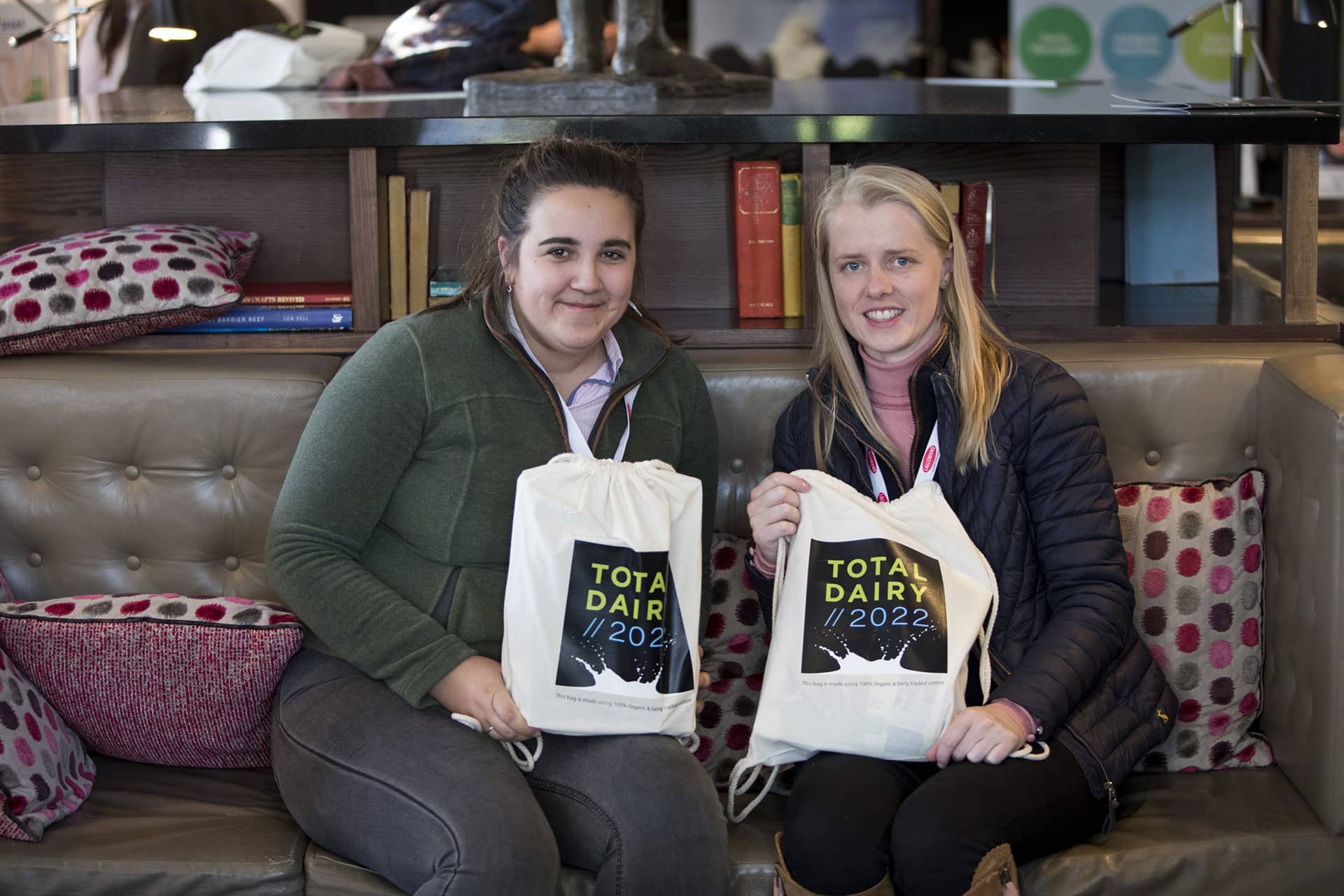Total Dairy offers an opportunity for both farmers and professionals to learn about the latest developments in the dairy industry.
This year Emily and Millie attended the Conference.
Nutritional Developments
Currently the carbon levels at the farmgate is at 1.2kg Co2 per kilo of fat/protein. It is key that we look towards nutritional developments to reduce this figure and improve the environmental impact from dairy farming. One option that was discussed heavily at Total Dairy was the use of fibre within diets, by unlocking and opening fibre it leads to greater digestion and decreases the NDF/ADF of the diet but increases the availability of energy from the silages to reduce the reliance on purchased energy. AB Vista launched their new product at Total Dairy called Vistapre T a supplement to add to rations to open fibre and increase the availability of energy from silages.
Whilst one is always skeptical about trails proving the cost effectiveness of feed additives, on farm trails show increases in yields of 2.8 litres/cow with no drop in F/P, a 9% rise in yields. Of course, like everything there is a cost, the daily cost from Vistapre T is 12.5p/cow/day but with a 2.8 litre rise even at 40ppl that is an extra £1.12 per/cow/day = a margin of 99.5p/cow/day. We will keep you posted with any experiences we see with clients using this product.
Improving digestion in cattle
Another option for improving digestion in cows is the use of yeast to control the rumen pH which will improve the rumen fermentation conditions allowing for greater fibre digestibility and enhanced ruminal microbiota establishment.
The use of yeasts in high starch diets is well proven, and we have seen significant lifts with yeast this year. The importance of transition management was again emphasized, it is a key area to continual review performance as 75% of diseases occurs within the first month after calving.
Getting the basics right on transition management sets the cow up well for lactation, checking the feed and water space regularly is key as it will ensure no cow is comprised as numbers within the group vary throughout the year.
Each cow can mobilise 25kg of protein in the first 5 weeks of lactation, therefore fresh cow intakes are key to reduce body condition loss as the cows energy requirements increase by times from dry to lactating. It is also key to consider negative energy balance has many consequences.
The severity, timing and duration of a negative energy balance increases the risk of ketosis, reduces immunity, increases risk of disease, reduce milk yield and fertility. These effect not just cow performance but profit margin with an estimated cost of ketosis being £257 through direct and component costs. The best prevention method being on a herd and individual basis with the effective management of the cows through transition being key.
Listen to the cows and the cows will tell you what is wrong
Lameness Markers
A key area of preliminary research being presented at Total Dairy was predicting early signs of lameness in dairy cows by profiling metabolites in milk. Approximately 80% of lameness in cows can be linked to a previous lameness incidence therefore the most effective treatment is the prevention of the first incidence of lameness.
By identifying biological markers associated with a lameness incidence, they can be used to highlight lameness at an earlier stage to enable earlier assistance with a higher chance of recovery.
The studies so far have compared lame cows to sound cows and have shown differences in the milk fatty acid composition, which function in cell activation, immune response and inflammation, and have used these as biomarkers to identify lame cows.
Keeping Cows Cool
Dairy producers could be losing approximately 138 litres per cow due to heat stress, costing on average £128 per cow.
Cows are inefficient in their ability to lose heat, and the record high temperatures seen this past summer have only exacerbated this. Cows lose heat through the temperature/humidity of the environment and through biological actions such as sweating and panting, not losing the excessive heat has various effects such as reduction of intakes, a 50% milk yield reduction, digestive upset, increased lameness incidents and poorer fertility results.
As the global temperature increases, managing cows through periods of intense heat will enable high performance throughout the year.
With the financial implications of heat stress on farmers margins, adopting various prevention techniques will help ensure the ramifications felt from summer 2022 will be reduced. Good prevention techniques include a heat stress management plan for 2023, keeping the cows in when it is too hot, grazing at nights instead of days, ensuring ample of water-trough space and shade, shaving strips down their backs or considering using positive pressure ventilation in collecting yard or where cows gather.




